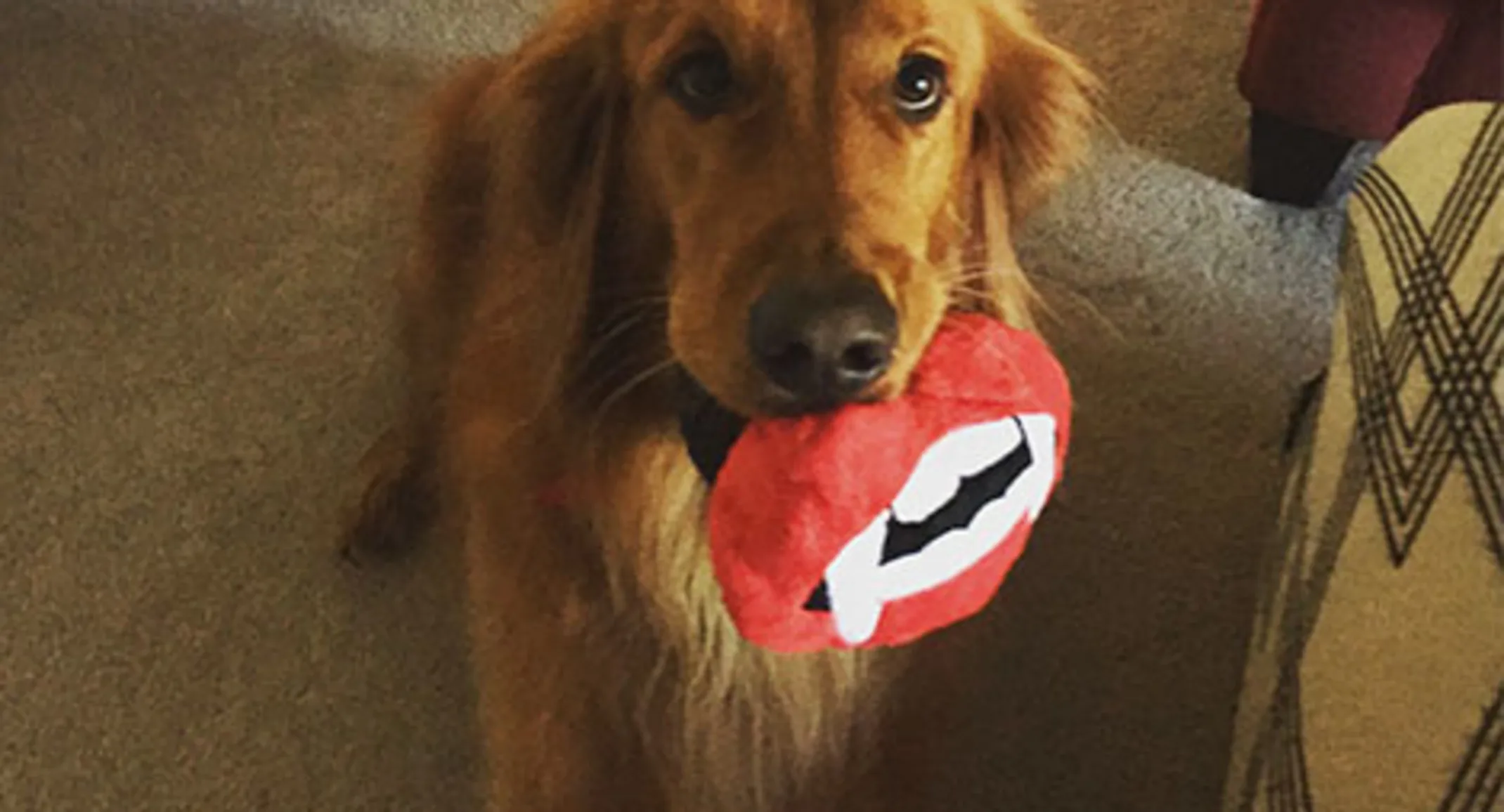National Pet Dental Health Month
Pet Health

If you’ve ever thought “my pet is too young for a dental cleaning” or “my pet’s teeth look clean” you may reconsider. Periodontal disease affects 85% of pets over 3 years of age.
Meet Gunner, a 3 ½ year old Golden Retriever, who suffers from bad breath and a total lack of personal space. That’s why his owner checked him into Veterinary Emergency & Specialty Hospital for a consult with Dr. Winter, a board-certified expert in veterinary dentistry and oral surgery.
Dr. Winter provides dental care based on the American Veterinary Dental College (AVDC) standards of excellence. He begins with an initial consultation before a thorough exam can be done under anesthesia. Anesthesia is the only way to perform a complete dental cleaning including x-rays.
In this initial examination, Dr. Winter will be evaluating Gunner to
• Confirm lymph nodes are not overly firm or enlarged
• Feel in-between the inner mandibular space to check for growths or swellings
• Observe facial symmetry
• Check for signs of eye drainage
• Count teeth
• Verify the occlusion is normal with a good scissor bite, making sure the jaw can close comfortably and completely
• Examine gum tissue for swelling or inflammation
After his initial evaluation, Gunner is back to receive a complete dental cleaning with a full oral exam. He’s already received a blood test to check for healthy organ function, to determine he’s healthy enough to undergo anesthesia.
PRE-OP PROCEDURE
Gunner is given a pre-anesthetic injection to help him relax, as well as provide initial pain management.
Now that he’s groggy, the remaining pre-operative procedures are less stressful. The leg is shaved and disinfected, and a catheter placed and secured. The catheter will allow the start of IV fluids.
An induction agent is given to further anesthetize Gunner for intubation.
An endotracheal tube will enable Gunner to breath in the anesthetic gas and maintain proper oxygen and anesthesia levels throughout the entire procedure. From this point forward, his vitals will be continually monitored and charted by our veterinary technician.
Dr. Winter begins with a systematic dental probing technique to check the attachment of the gum to the tooth, in three places, on both sides of each tooth. If the probe can enter beneath the gum line more than 2 millimeters, it’s likely that there is infection present beneath the gumline or that the tooth has abscessed. This assessment can only be confirmed through dental radiographic imaging, or xrays.
A scaler removes calculous from beneath the gumline and we see that it’s caused redness and inflammation on the gum tissue. After today’s cleaning, that tissue will heal and return to normal.
An ultrasonic scaling tool is used to deeply clean above and below the gumline. This is the most important step in the cleaning, which is why it requires full anesthesia. An awake patient simply would not tolerate the sound of the instruments or the lie still for this type of cleaning. The gum tissue is delicate and there’s a risk of breaking a tooth if the patient was awake. Removing tarter from just the exposed surface is cosmetic, and does nothing for the patient’s oral health.
Throughout the procedure a technician charts vitals as well as physically observes the patient. She’s using advanced medical equipment to monitor ECG, pulse oximeter, two modes of blood pressure monitoring, the patient’s temperature, how well he’s ventilating, and how he’s breathing. She’ll be making adjustment as needed.
Dr. Winter blows air between the tooth and gum, checking to make sure he has removed every bit of tarter.
Gunner’s teeth are polished to smooth out any micro etches caused by our instruments. The paste leaves a clean and smooth enamel surface and is then rinsed away with a disinfecting solution. That’s it! Gunner is ready to be woken up and move to recovery for a few hours before going home.
This entire procedure takes at least an hour depending on the severity of your case. A few signs it’s time for a cleaning are: bad breath, trouble eating, red or inflamed gums, loose or broken teeth. If you’re still not sure, check with your primary veterinarian. They should provide you with a referral for a consultation with Dr. Winter for your dental cleaning. Or, you can call to request an appointment directly. There will be a video of this entire procedure, stay tuned!
